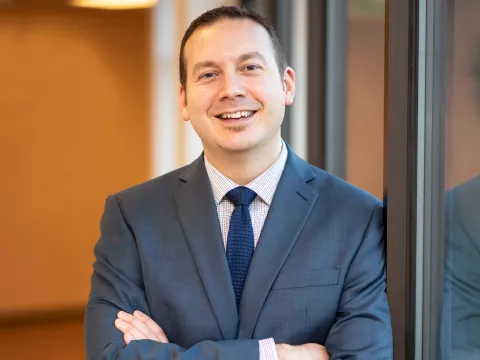- AdventHealth

Panelists included Alric Simmonds, MD, chief health equity officer for AdventHealth; David Sinclair, MD, chief medical officer for AdventHealth Altamonte Springs; and Dr. Rev. Gabriel Salguero, pastor at the Gathering Place.
Seen as fundamental to creating policy and health care equity, three principles – make it familiar, make it easy and make it comfortable – provided the foundation for the third “Finding Hope” panel discussion, “Finding Hope by Expanding Healthcare Equity.”
Reflecting on information gleaned from focus group discussions, panelists Alric Simmonds, MD, chief health equity officer for AdventHealth; David Sinclair, MD, chief medical officer for AdventHealth Altamonte Springs; and Dr. Rev. Gabriel Salguero, pastor at the Gathering Place in Orlando, discussed how the medical and faith communities can work together to close the health equity gap.
With a focus on reimagining the partnership between faith communities and the health care system, the panelists shared these thoughts:
- A familiar environment, such as a place of worship, sets the stage for proactive rather than reactive discussions. “Spaces for grace,” as Dr. Salguero calls them, provide a setting where difficult discussions can take place, particularly for those who may be unprepared to discuss sensitive issues in a medical setting.
- Those same spaces often became vaccination sites during the height of the COVID-19 pandemic, and could just as easily be used for, among other things, health fairs, food pantries, consultations and clinics. Said Dr. Simmonds, “We have got to get to a place where our health system also goes into that space and utilizes that to provide education and perhaps social services, clinical care, end-of-life decision-making care, in a place where the congregants, the believers, the faithful are already primed and open to those kinds of lessons.”
- Making it easy also means seeking to capitalize further on the many advances made in telemedicine and telehealth during a challenging couple of years. Continuing to leverage technology allows these clinical touchpoints to anchor care, without the need for venturing out, driving long distances, or having to rely on public transportation.
- As for the need to feel comfortable, Dr. Simmonds said, “You get greater compliance with treatment when the providers look like, sound like – whether it is in gender or race – the patient populations that they are caring for. There’s an ability to connect.”
Ways in which faith leaders might assist in establishing that inclusive environment of care, noted Dr. Salguero, include volunteering translation services and encouraging young people in their communities to enter the medical profession, creating a more culturally diverse pool.
“We cannot be a safe and high reliable health care system, no health care system can, as long as health inequities exist,” said Dr. Simmonds.
Watch the panel discussion below.
Finding Hope Discussions Focus on Closing Health Equity Gap
Recent News
On the newest Inspiring Wholeness podcast, Obie Diaz, local morning radio show host, shares how a routine physical eventually led to two open heart surgeries.
On the newest Inspiring Wholeness podcast, Obie Diaz, local morning radio show host, shares how a routine physical eventually led to two open heart surgeries.
Health care and government leaders celebrate the much-anticipated expansion of AdventHealth University.
Wangsness has more than 30 years of experience in health care.
‘Imagine Wholeness’ features the Grammy-winning group Take 6 and the AdventHealth Orchestra.
Bejarano will assume leadership on Dec. 15, 2024.
The 25th anniversary of ‘To Err is Human’ provides an opportunity to reflect on key learnings that have shaped the hospital system’s culture of safety.
Stories of support between AdventHealth patients and doctors showcase a healing circle of care.
Davis will provide executive oversight of AdventHealth’s newest division.
Johnson is a senior health care executive with nearly 20 years of leadership and operations experience.
On Veteran’s Day, AdventHealth salutes one of their own who watched 9/11 and changed his life trajectory – eventually coming face-to-face with Saddam Hussein in Iraq.










